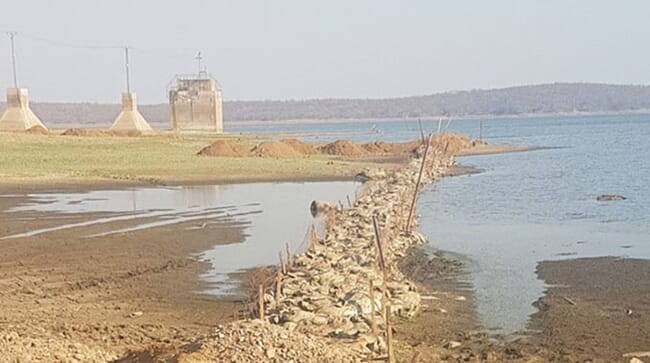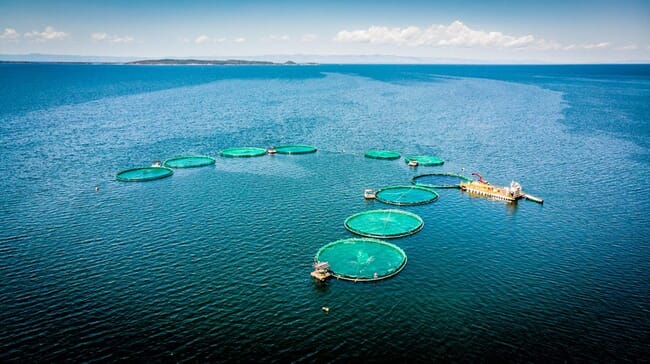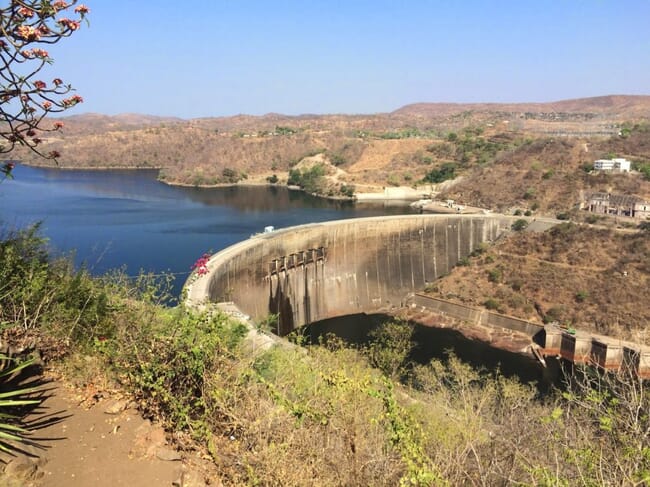Lake Kariba's tilapia farmers are concerned, as dwindling water levels mean access to electricity is becoming more sporadic and suitable sites for their operations are becoming scarcer.

© The Herald
By August this year, the lake's level had dropped to 30 percent of its maximum, owing to low rainfall in its catchment area over the October 2018-March 2019 wet season, reported the Zambezi River Authority (ZRA). By December 16, it had fallen to a mere 10 percent of its capacity, the lowest since 1996.
Tariro Chari, a spokesperson for Lake Harvest Aquaculture, told The Fish Site that the reducing lake levels are a cause for concern on many fronts. The company, recognised as the biggest integrated freshwater fish farming business in Africa, operates land and on-lake operations in cages, both of which have been affected.

© Yalelo
“For all our land operations, water is pumped from the shoreline,” she said.
“This shoreline was 500 metres from our farm at the end of August 2018. Sixteen months later, the shoreline is now more than two kilometres away. With the rainy season only just beginning and any inflows into the lake only expected in April 2020, this shoreline will continue to recede.”
This, she added, presents unique problems for pumping capacity, as the further away the pump station is, the more head is required to pump water over longer distances.
“As the water recedes, the pump station must be moved at great cost. It also means that the oxygen, pH and water temperature levels start to deteriorate from the ideal conditions for fish breeding, growing and handling. To mitigate this, booster pumps have to be installed, the ponds have to be aerated and water quality checks have to increase,” said Chari.
As for the grow-out cages on the lake, she said as the water level falls, predation and disease pressure tend to increase while oxygen levels drop. Furthermore, as the lake becomes shallower, stocking densities have to be reduced.
“Our siting of the cages is determined by the depth from the lake floor,” she said.
“Although the lake levels are reducing at about one centimetre per day, our shallowest cages are currently 20 metres above the lake floor. However, less water increases the likelihood of predators like crocodiles and hippos accessing the cages. It also increases the disease pressure on the entire water body and reduces the oxygen available to all animals that make use of the water body. To mitigate, we ensure that water quality parameters are monitored, reducing stocking densities, and more patrols for predators are done.”

Water levels are only 10 percent of those pictures here
Lake Kariba – which marks the border between Zambia and Zimbabwe – was made by a dam constructed across the Zambezi River in 1958 and remains the globe’s largest man-made water body. It is fed from rainfall in a catchment area that covers large areas of Angola, Botswana, Namibia, Zambia and Zimbabwe. Although it was primarily constructed for electricity generation, the dam has spawned a sizeable tourism industry for Zimbabwe and Zambia while supporting wild kapenta fishing and tilapia farming ventures.
On the Zambian side, Yalelo, which is operated by the Dutch-headquartered FirstWave Group, is suffering as a result of the depressed hydroelectricity output caused by the drought.
“With 15-hour blackouts nationwide Yalelo has needed to install on-site electricity generation and backup at all 50 shops, warehouses and offices. Furthermore, end consumers struggle to store fish as most households are unable to install backup electricity generation in their home to operate fridges,” said Adam Taylor, FirstWave Group’s CEO.
As well as its operations on Lake Kariba, Yalelo has farms on Lake Victoria too.
The low water level at Kariba, Taylor added, has not directly affected Yalelo's operations. However, it has had an impact on their access to electricity.
“Hydroelectricity dams have a ‘minimum operating level’ which is quite high. The electricity turbines cannot physically access water below that level. Only water above the minimum operating level is used for hydroelectricity generation. Yalelo's sites have a minimum depth of 30 metres even when all power generation water is exhausted,” Taylor explains.
As a result of the blackouts caused by the depleting water level, Lake Harvest, like Yalelo, has had to adjust the way it runs its downstream business.
“We can no longer process every day, as we need both water and power to ensure that our product is of the highest quality,” Chari said.
“When there is no power, we are unable to process or freeze fish. When there is no water, we are unable to clean the factory. As a result, we have to stop processing. To mitigate, we have a generator to run the cold stores to ensure that product already processed remains at the correct temperatures. We also have a water reservoir that stores enough water for use for two working days.”
The seasonal forecast does not look good for Lake Kariba and fish farming ventures that rely on it, according to a report released in November 2019 by a Washington-based institution, Famine Early Warning Systems Network. It says there is a high likelihood of below average seasonal rainfall totals, “raising concerns on the backdrop of the severe drought of the 2018-19 season.”
Already, the report says, while most parts of the region received near-average rainfall between September and early November, “negative rainfall anomalies” were seen in some countries, including Zambia and eastern Democratic Republic of Congo.
One sustainable way through which aquaculture companies on the dam can minimise the impact of low water levels on their businesses, said Garikai Munatsirei, chairperson of the Zimbabwe Fish Producers’ Association, is to site their farms on tributaries or other deeper channels of the lake. Though often covered in the lake waters, he said, areas that were formerly tributaries of the Zambezi before the dam was built can be easily identified on old, publicly available maps of the area.
However, he added that, generally, operations which are not situated in that way are being forced to adapt to the receding water level, and have to bear increased costs of production.
“If a farmer had direct access to his facilities when the lake was full, when its level falls, there of often need for one to take longer routes to access the same,” he told The Fish Site.
“The facilities were obviously sitting somewhere when the water level was at 50 metres, for example, but when the water level drops you have to re-site your cages. This must mean reducing stocking densities too. Furthermore, if they have to run their refrigeration and processing units using diesel-powered generators it means more money must be spent on those jobs than if cheaper grid electricity was available. So, in short, the low lake level affects fish farming, with a net effect of increasing costs.”



